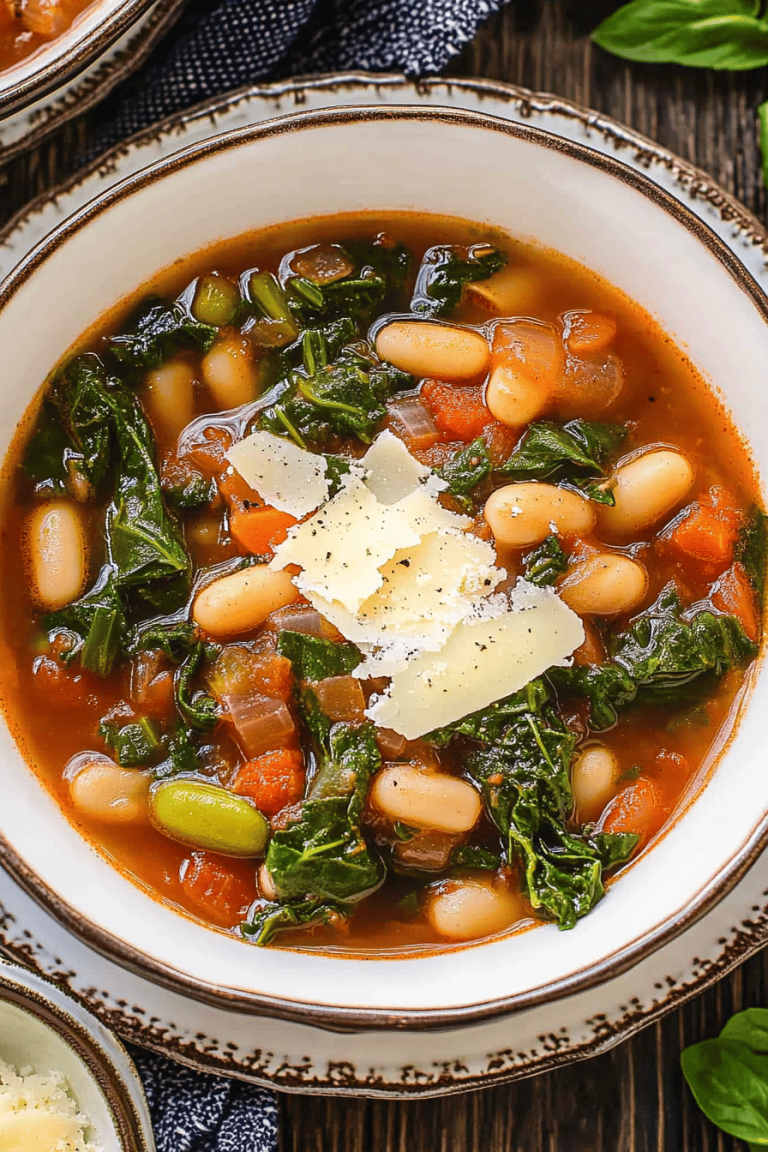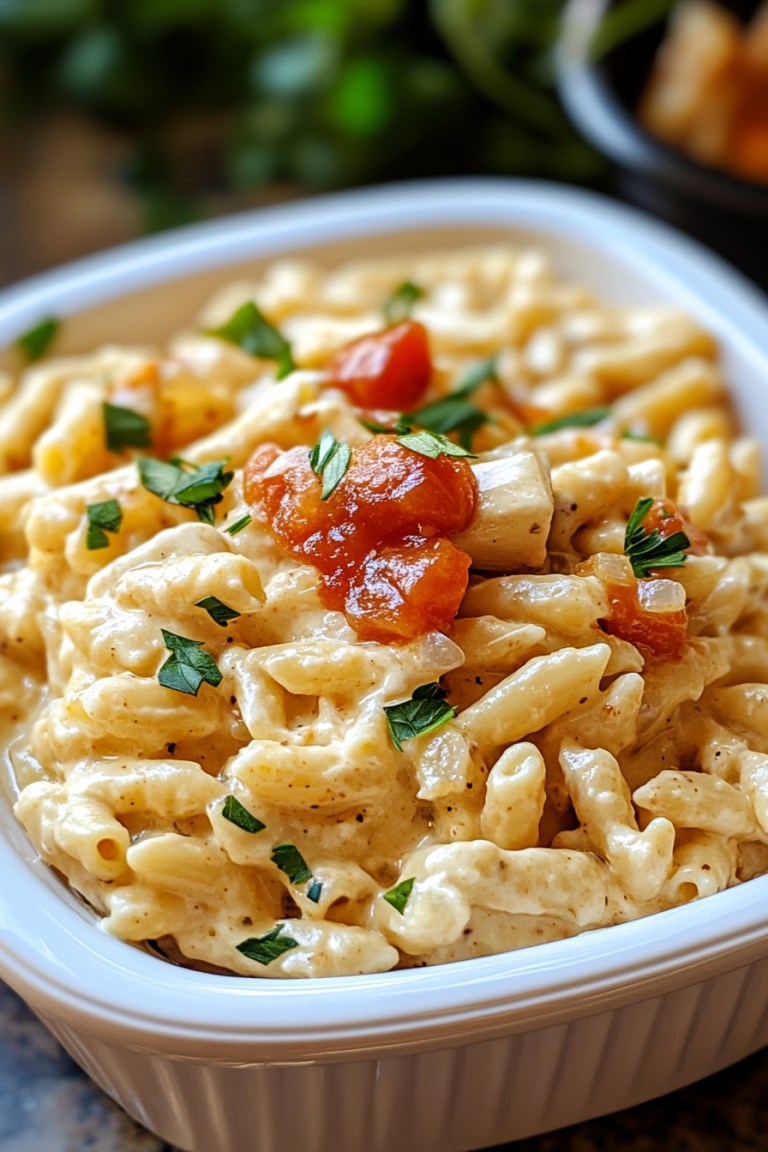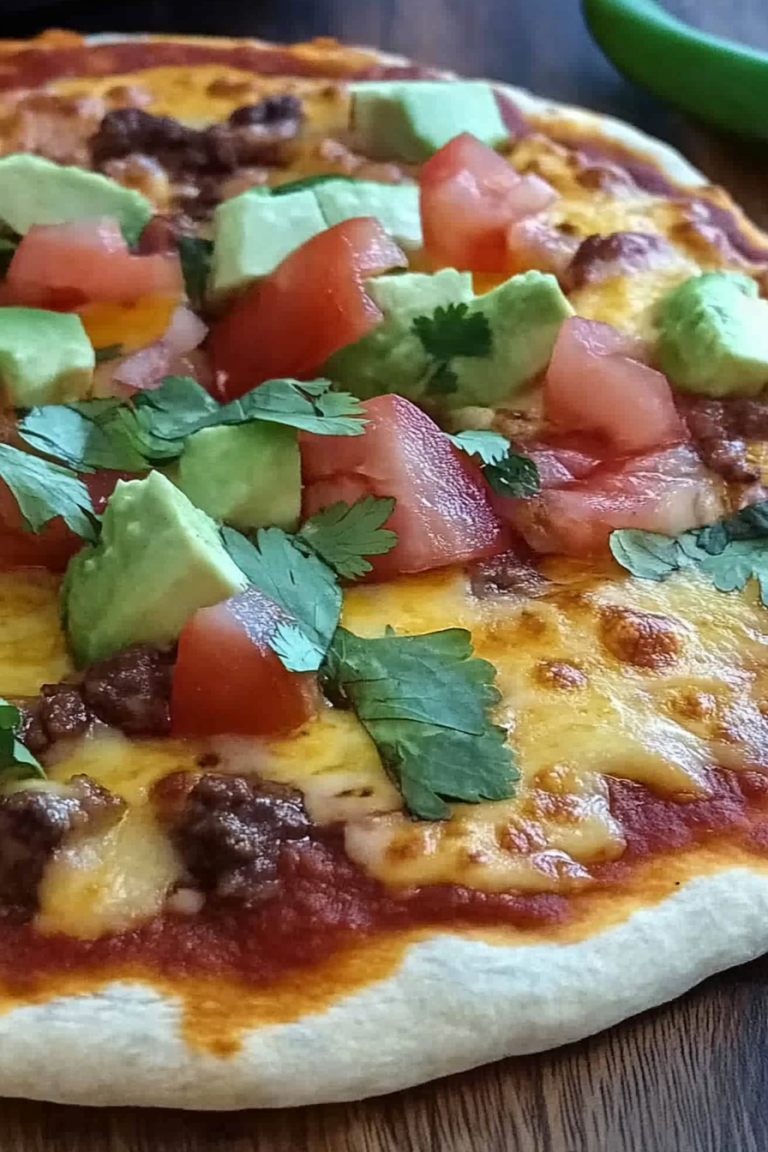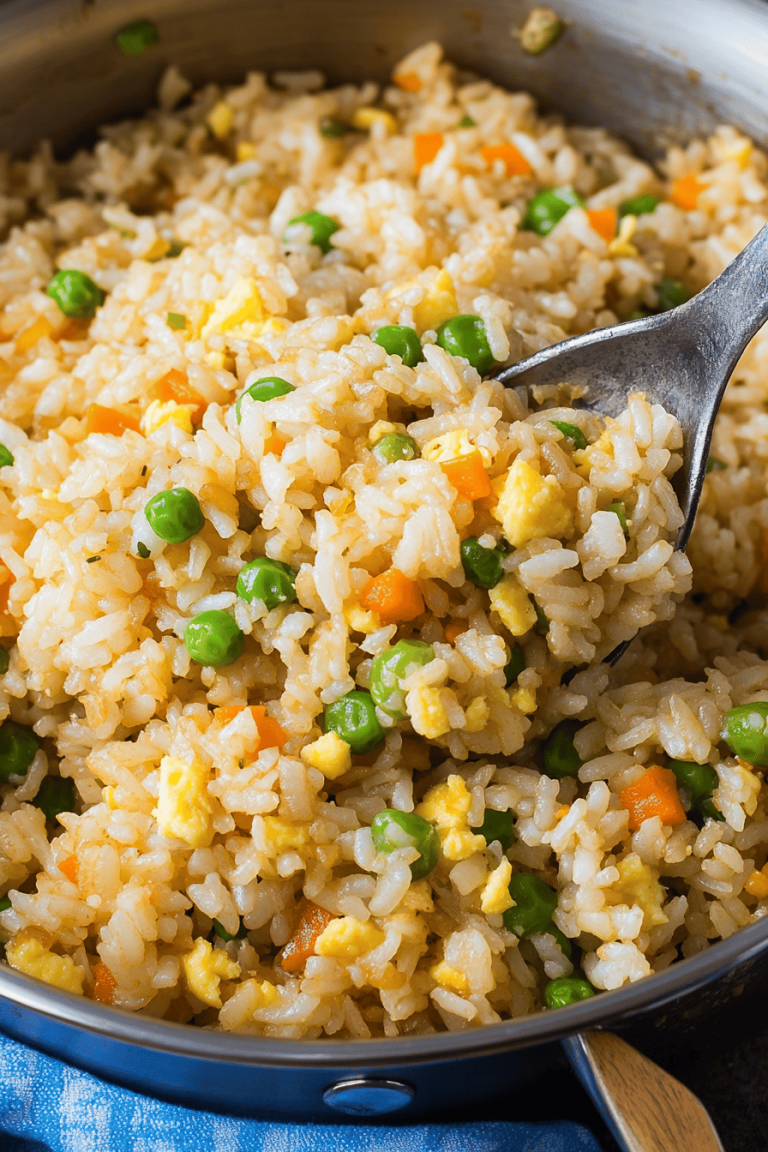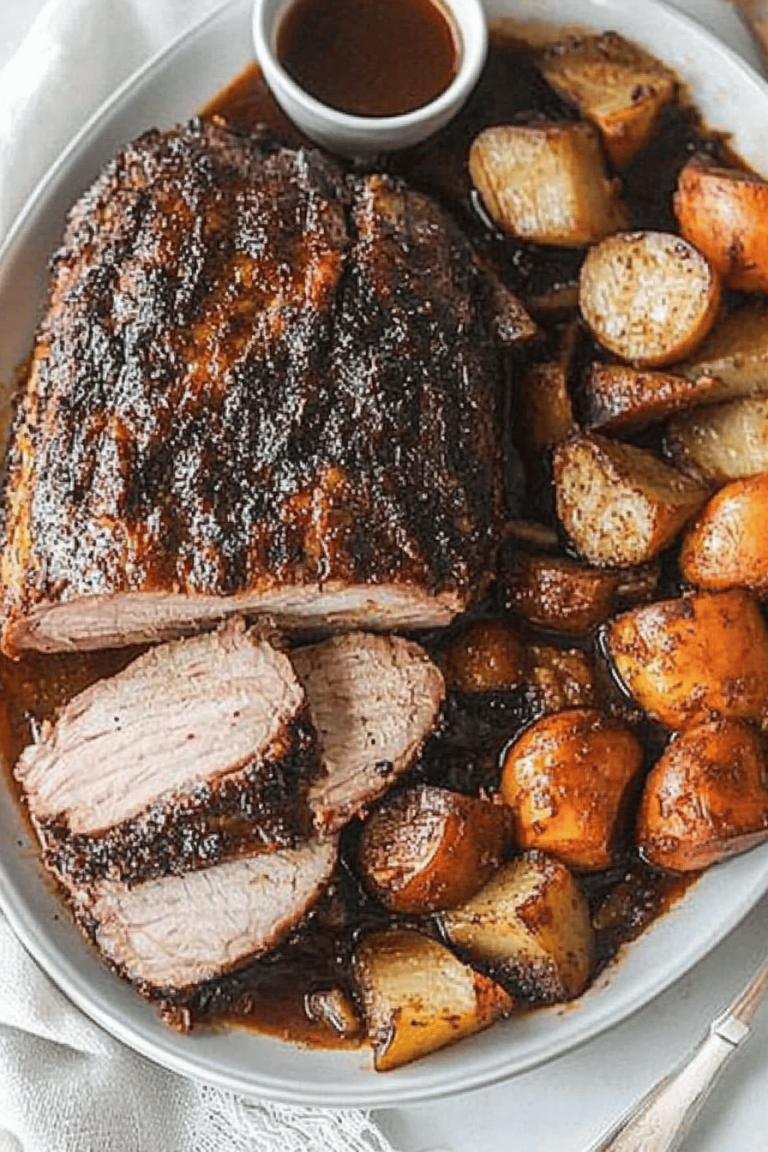You know those nights? The ones where the clock is ticking, the fridge looks a little bare, and everyone’s starting to get that “what’s for dinner?” whine? Yeah, I’ve been there more times than I can count. And on those nights, there’s one dish that always, always saves the day: my chicken chow mein. It’s not just *any* Chicken Chow Mein, either. This is the kind that tastes like it came straight from your favorite takeout spot, but you made it right there in your own kitchen. It’s got that perfect balance of savory, slightly sweet, and that wonderful tender chicken and crisp veggies. Honestly, it’s so good, I’ve had friends beg me for the recipe after one bite. It’s got that comforting, familiar flavor that just makes you feel good, and the aroma when it’s cooking? Pure magic. Forget complicated stir-fries; this is your new weeknight hero.
What is chicken chow mein?
So, what exactly *is* this magical dish we call Chicken Chow Mein? Think of it as the ultimate comfort food hug in noodle form. At its heart, it’s stir-fried noodles (usually egg noodles, for that lovely chewiness) tossed with tender pieces of chicken, a colorful medley of crisp vegetables, all coated in a rich, savory, and slightly sweet sauce. The name itself, “Chow Mein,” literally translates to “stir-fried noodles” in Cantonese, which is pretty straightforward! It’s a staple in Chinese-American cuisine, a dish that’s been adapted and loved by families all over the world. It’s not meant to be overly spicy or complicated; it’s about harmonious flavors and textures coming together. It’s essentially a delicious dance between tender chicken, vibrant veggies, and perfectly cooked noodles, all swimming in a sauce that makes you want to lick the plate clean.
Why you’ll love this recipe?
Honestly, there are so many reasons why I keep coming back to this Chicken Chow Mein recipe, and why I just know you’re going to adore it too. First off, the FLAVOR. Oh my goodness, the flavor. It’s this incredible symphony of savory soy sauce, a touch of sweetness from the sugar or honey, a hint of tang from the vinegar, and that delicious umami from the oyster sauce (if you use it). When it all coats those noodles and chicken, it’s just divine. And the best part? It’s surprisingly SIMPLE to make. I know “stir-fry” can sometimes sound intimidating, but this is really just a few steps. You chop, you stir-fry, you toss, and boom – dinner is served! It’s a lifesaver on those busy weeknights when you’re short on time but craving something truly satisfying. Plus, it’s incredibly COST-EFFECTIVE. Most of the ingredients are pantry staples or easily found at any grocery store, making it much kinder to your wallet than a restaurant meal. And let’s talk VERSATILITY. Don’t like mushrooms? Swap them out! Want more broccoli? Go for it! You can tailor the veggies to whatever you have on hand or whatever your family loves. I’ve even made it with shrimp when I’m feeling fancy! What I love most about this dish, though, is how it brings people together. The smell alone has a way of drawing everyone into the kitchen, and it’s the kind of meal that disappears in minutes at my house. It’s like a culinary warm blanket on a chilly evening, or a bright burst of sunshine on a gloomy day. It truly stands out because it’s not just a recipe; it’s a memory-maker.
How do I make chicken chow mein?
Quick Overview
Making this Chicken Chow Mein is all about efficiency and layering flavors. You’ll quickly cook your seasoned chicken until it’s just done, then sauté your veggies until they’re tender-crisp. Next, you’ll add the cooked noodles and that magic sauce, tossing everything together until it’s gloriously coated. The whole process, from start to finish, usually takes me about 30 minutes, maybe 40 if I’m taking my time. It’s so straightforward that even if you’re new to stir-frying, you’ll feel like a pro in no time. The key is having everything prepped before you start cooking – that’s my biggest tip for successful stir-fries!
Ingredients
What is the recipe for chicken marinade?
2 boneless, skinless chicken breasts or thighs, thinly sliced into bite-sized pieces
1 tablespoon soy sauce (use good quality, like Kikkoman or La Choy!)
1 teaspoon cornstarch (this helps tenderize the chicken and gives it a nice coating)
1/2 teaspoon sesame oil (adds a lovely nutty depth)
For the Noodles:
8-10 ounces chow mein noodles or egg noodles (look for the dried ones in the Asian aisle; they’re perfect for this!)
1 tablespoon vegetable oil (for tossing the cooked noodles)
For the Vegetables:
2 tablespoons vegetable oil, divided
1 medium onion, thinly sliced
2 cloves garlic, minced (don’t skimp on the garlic, it’s crucial!)
1 inch fresh ginger, grated or minced (fresh ginger makes all the difference!)
1 cup broccoli florets, cut into small pieces
1 cup sliced carrots (I like to use pre-shredded for speed, but sliced is great too!)
1 cup sliced mushrooms (cremini or shiitake work wonderfully)
1/2 cup snow peas or snap peas, trimmed
For the Chow Mein Sauce:
1/4 cup soy sauce
2 tablespoons oyster sauce (optional, but I highly recommend it for that authentic flavor!)
1 tablespoon Brown Sugar or honey (adjust to your sweetness preference)
1 teaspoon rice vinegar (or white vinegar if that’s what you have)
1 teaspoon cornstarch (to thicken the sauce slightly)
1/4 cup chicken broth or water
Step-by-Step Instructions
Step 1: Preheat & Prep Pan
Get your wok or a large, heavy-bottomed skillet screaming hot over medium-high heat. Add about 1 tablespoon of vegetable oil and swirl it around to coat the pan. This high heat is crucial for that delicious stir-fried flavor and for cooking things quickly without them getting soggy.
Step 2: Mix Dry Ingredients
While the pan heats up, whisk together all the ingredients for the Chow Mein Sauce in a small bowl: soy sauce, oyster sauce (if using), brown sugar or honey, rice vinegar, cornstarch, and chicken broth or water. Make sure the cornstarch is fully dissolved – you don’t want any lumps! Set this aside.
Step 3: Mix Wet Ingredients
In a medium bowl, combine the thinly sliced chicken pieces with 1 tablespoon of soy sauce, 1 teaspoon of cornstarch, and 1/2 teaspoon of sesame oil. Toss everything together really well until the chicken is evenly coated. Let it marinate for at least 10 minutes while you get your veggies ready. This step is like giving the chicken a little flavor spa treatment!
Step 4: Combine
Add the marinated chicken to the hot, oiled pan in a single layer. Let it cook for about 1-2 minutes without moving it, so it gets a nice sear. Then, stir-fry until it’s just cooked through and lightly golden. This should only take about 3-5 minutes total. Remove the chicken from the pan and set it aside on a plate. Don’t worry if it’s not fully browned; it will finish cooking later.
Step 5: Prepare Filling
Add the remaining 1 tablespoon of vegetable oil to the same pan. Add the sliced onion and stir-fry for about a minute until it starts to soften. Then add the minced garlic and ginger and cook for another 30 seconds until fragrant – be careful not to burn the garlic! Toss in the broccoli florets and carrots and stir-fry for about 3 minutes. Add the mushrooms and snow peas and stir-fry for another 2-3 minutes, or until the vegetables are tender-crisp. You want them still to have a bit of a bite!
Step 6: Layer & Swirl
While the vegetables are cooking, cook your chow mein noodles according to package directions. Usually, this means boiling them for a few minutes until al dente. Drain them well and toss them with 1 tablespoon of vegetable oil to prevent them from sticking together. Once the vegetables are tender-crisp, return the cooked chicken to the pan. Pour the prepared Chow Mein Sauce over everything. Stir and toss gently for about 1-2 minutes until the sauce thickens and coats all the ingredients beautifully. Finally, add the drained and oiled noodles to the pan. Toss everything together until the noodles are well coated with the sauce and everything is heated through. This is where all the magic happens!
Step 7: Bake
This recipe doesn’t require baking! Everything is cooked right there on the stovetop in your wok or skillet.
Step 8: Cool & Glaze
The “glaze” here is really just the delicious sauce that coats everything. Once you’ve tossed the noodles, chicken, and vegetables in the thickened sauce, your Chow Mein is ready to go! You don’t need to cool it down before serving; it’s best enjoyed hot off the stove.
Step 9: Slice & Serve
Serve your Chicken Chow Mein immediately in bowls. It’s perfect on its own, but you can also garnish it with some toasted sesame seeds or chopped green onions if you like. I usually just dish it up family-style right from the pan!
What to Serve It With
One of the things I absolutely adore about this Chicken Chow Mein is how versatile it is. It’s fantastic all on its own, of course, but if you’re looking to round out a meal or serve it for a special occasion, here are some of my favorite pairings:
For Breakfast: This might sound a little unusual, but sometimes I’ll make a smaller batch for a hearty brunch. It’s surprisingly satisfying! I’ll pair it with a simple fried egg on top, sunny-side up, so the yolk can mingle with the noodles. A side of fresh, crisp fruit like orange slices or some melon really balances out the richness.
For Brunch: For a more elegant brunch spread, I like to serve this Chicken Chow Mein alongside some delicate spring rolls or fresh steamed dumplings. A light, refreshing cucumber salad with a sesame dressing also works beautifully. For drinks, a bubbly mimosa or a refreshing iced green tea is always a hit.
As Dessert: This is definitely a savory dish, so it’s not typically served *with* dessert in the traditional sense. However, if you’re having a multi-course meal, something light and fruity like a mango pudding or some lychees would be a perfect palate cleanser after this rich noodle dish.
For Cozy Snacks: Honestly, this is my go-to for a comforting snack, especially on movie nights! I’ll just portion out smaller bowls for everyone, maybe with a side of crispy wonton strips for dipping. It’s that kind of dish that feels like a treat but is also incredibly grounding. My kids sometimes ask for leftovers for their “snack” – which is basically a second dinner!
My family’s personal tradition is to have this on our “celebration nights,” like the last day of school or when someone gets a good report card. It feels special, but it’s so easy that I don’t feel stressed in the kitchen. It’s just pure, delicious comfort.
Top Tips for Perfecting Your Chicken Chow Mein
I’ve made this Chicken Chow Mein more times than I can count, and over the years, I’ve picked up a few tricks that make a huge difference. Here are my top tips to ensure yours turns out absolutely perfect every single time:
Noodle Prep: Don’t overcook your noodles! They should be al dente, meaning they still have a slight bite to them. They’ll continue to cook slightly in the hot sauce. Once drained, toss them with a little oil – this is super important to prevent them from clumping into a sticky, sad mess. I learned this the hard way early on!
Mixing Advice: When you’re stir-frying, don’t overcrowd the pan. Cook in batches if necessary, especially the chicken. Overcrowding will steam the ingredients instead of stir-frying them, leading to soggy textures. Keep everything moving in the pan; that constant motion is what gives it that characteristic stir-fry flavor.
Vegetable Harmony: Aim for tender-crisp vegetables. You want them cooked through but still retaining a nice crunch. Root vegetables like carrots will take longer, so add them first. Softer vegetables like mushrooms and snow peas can go in later. Taste as you go to get it just right.
Sauce is Key: Make sure your sauce ingredients are whisked together *before* you start cooking your main ingredients. That way, when it’s time to add it, it’s ready to go and you can thicken it quickly without burning anything. If the sauce seems too thick, a splash more broth or water will loosen it up. If it’s too thin, a little more cornstarch mixed with water (a slurry) can be stirred in.
Ingredient Swaps: Feel free to get creative with your vegetables! Bell peppers, celery, baby corn, water chestnuts – they all work beautifully. Just adjust cooking times accordingly. If you don’t have oyster sauce, you can omit it, but it really does add a depth of flavor. A little extra soy sauce and a pinch of sugar can help compensate, but it won’t be quite the same authentic taste.
The Sear on the Chicken: Don’t skip the marinating step for the chicken! The soy sauce and cornstarch tenderize it and give it a beautiful color and flavor. Letting it sear for a minute without stirring when you first add it to the pan creates little crispy bits that are just delightful.
Garlic and Ginger: Fresh is always best here. The pre-minced stuff in jars just doesn’t have the same punch. I use a microplane for my ginger; it’s so easy and gives you a lovely fine texture that distributes well. Trust me on this one, it’s worth the little extra effort.
Storing and Reheating Tips
This Chicken Chow Mein is so good, you might actually have leftovers – a rare occurrence in my house! Storing and reheating it properly is key to keeping it delicious:
Room Temperature: If you have leftovers, don’t leave them sitting out for more than two hours. The sauce can start to break down, and it’s not safe to eat after that. Ideally, get it into the fridge as soon as it’s cooled down a bit.
Refrigerator Storage: Once cooled, store your Chicken Chow Mein in an airtight container in the refrigerator. It will stay good for about 3-4 days. The noodles might absorb some of the sauce and become a little softer, but it’s still perfectly edible and tasty.
Freezer Instructions: While it’s best fresh, you *can* freeze Chicken Chow Mein. Let it cool completely, then portion it into freezer-safe containers or heavy-duty freezer bags. It should last for up to 2-3 months. Thawing is best done overnight in the refrigerator. Be aware that the texture of the noodles and vegetables might be slightly softer after freezing and reheating.
Glaze Timing Advice: The sauce, or “glaze” as we’re calling it, is already integrated. If you’re reheating from the fridge, I like to add a tiny splash of soy sauce or a little bit of chicken broth to the pan or dish before heating it up. This helps to revive the sauce and prevent the noodles from drying out. If you’re reheating from frozen, do the same – add a little liquid to help loosen everything up.
When reheating, the stovetop is usually the best bet. Gently reheat in a skillet over medium heat, stirring occasionally, until heated through. A microwave works too, just make sure to stir halfway through for even heating.
Frequently Asked Questions
Final Thoughts
So there you have it – my go-to, always-a-crowd-pleaser Chicken Chow Mein. I truly believe this recipe is a game-changer for busy weeknights or whenever you’re craving that fantastic takeout flavor without leaving your house. It’s the perfect blend of savory, sweet, and satisfying, packed with tender chicken, crisp veggies, and perfectly cooked noodles. It’s a recipe that’s been tested by my family countless times, and it never, ever disappoints. It’s a reminder that delicious, home-cooked meals don’t have to be complicated. If you love this recipe, I think you might also enjoy my [Link to another related recipe, e.g., Honey Garlic Chicken Stir-fry] or my [Link to another related recipe, e.g., Easy Beef and Broccoli] for more quick and tasty weeknight dinners. I can’t wait to hear how yours turns out! Don’t forget to leave a comment below with your thoughts or any fun variations you try. Happy cooking!
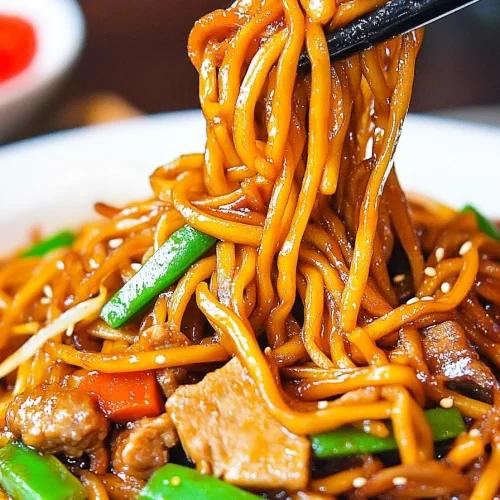
Chicken Chow Mein
Ingredients
Chicken Marinade
- 0.5 lb boneless, skinless chicken breast cut into thin strips
- 1 tablespoon soy sauce
- 1 teaspoon sesame oil
- 0.5 teaspoon cornstarch
Chow Mein Sauce
- 0.25 cup chicken broth
- 3 tablespoons soy sauce
- 1 tablespoon oyster sauce
- 1 teaspoon sesame oil
- 1 teaspoon cornstarch
- 0.5 teaspoon sugar
Stir-Fry
- 2 tablespoons vegetable oil
- 2 cloves garlic minced
- 1 inch ginger grated
- 1 cup sliced carrots
- 1 cup sliced celery
- 1 cup sliced onion
- 2 cups chopped broccoli florets
- 8 oz chow mein noodles cooked according to package directions
Instructions
Preparation Steps
- In a medium bowl, combine the chicken strips with soy sauce, sesame oil, and cornstarch. Toss to coat and set aside to marinate for at least 10 minutes.
- In a small bowl, whisk together all the ingredients for the chow mein sauce. Set aside.
- Heat 1 tablespoon of vegetable oil in a large skillet or wok over medium-high heat. Add the marinated chicken and stir-fry until cooked through and lightly browned. Remove chicken from the skillet and set aside.
- Add the remaining 1 tablespoon of vegetable oil to the skillet. Add garlic and ginger and stir-fry for about 30 seconds until fragrant.
- Add carrots, celery, and onion to the skillet. Stir-fry for 3-4 minutes until slightly tender.
- Add broccoli florets and stir-fry for another 2-3 minutes until bright green and tender-crisp.
- Return the cooked chicken to the skillet. Pour the prepared chow mein sauce over the ingredients. Stir well to combine and cook for 1-2 minutes until the sauce has thickened.
- Add the cooked chow mein noodles to the skillet and toss everything together to coat the noodles with the sauce. Cook for another minute until heated through.
- Serve hot and enjoy!

